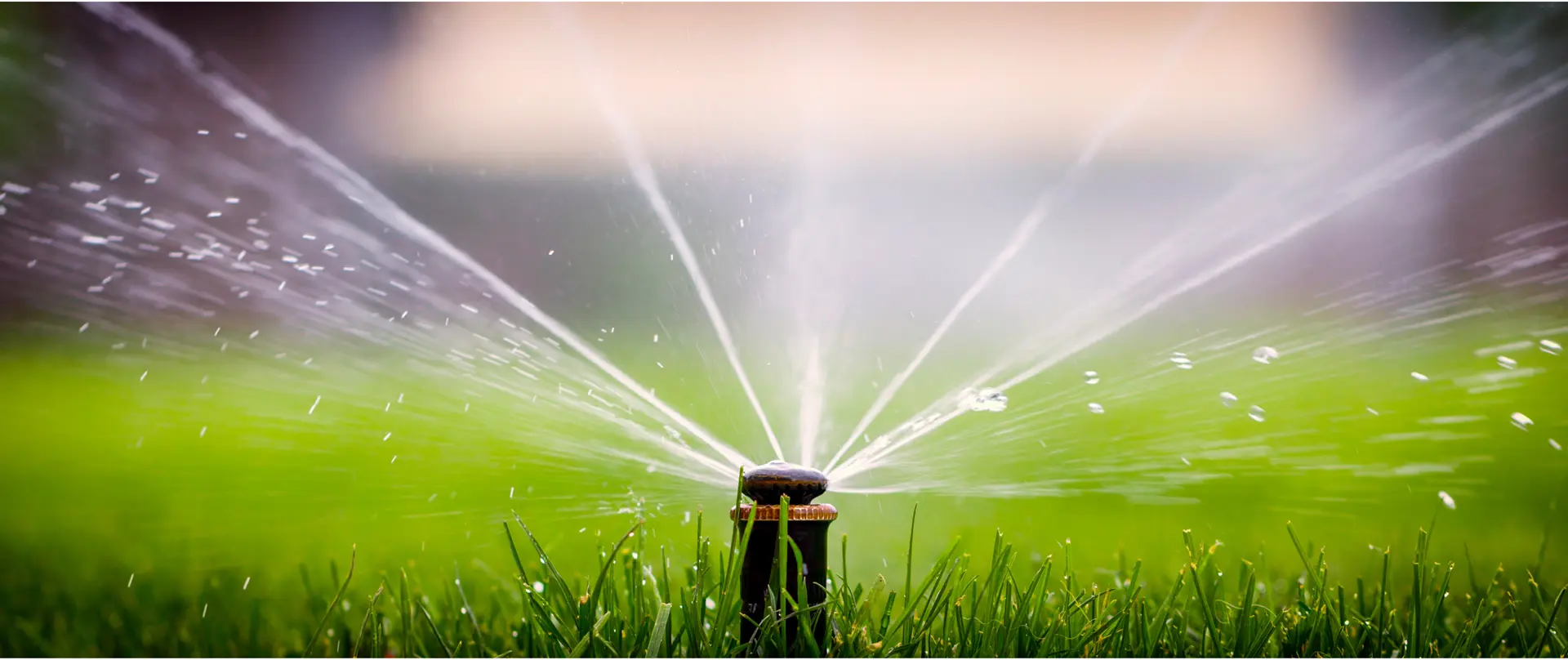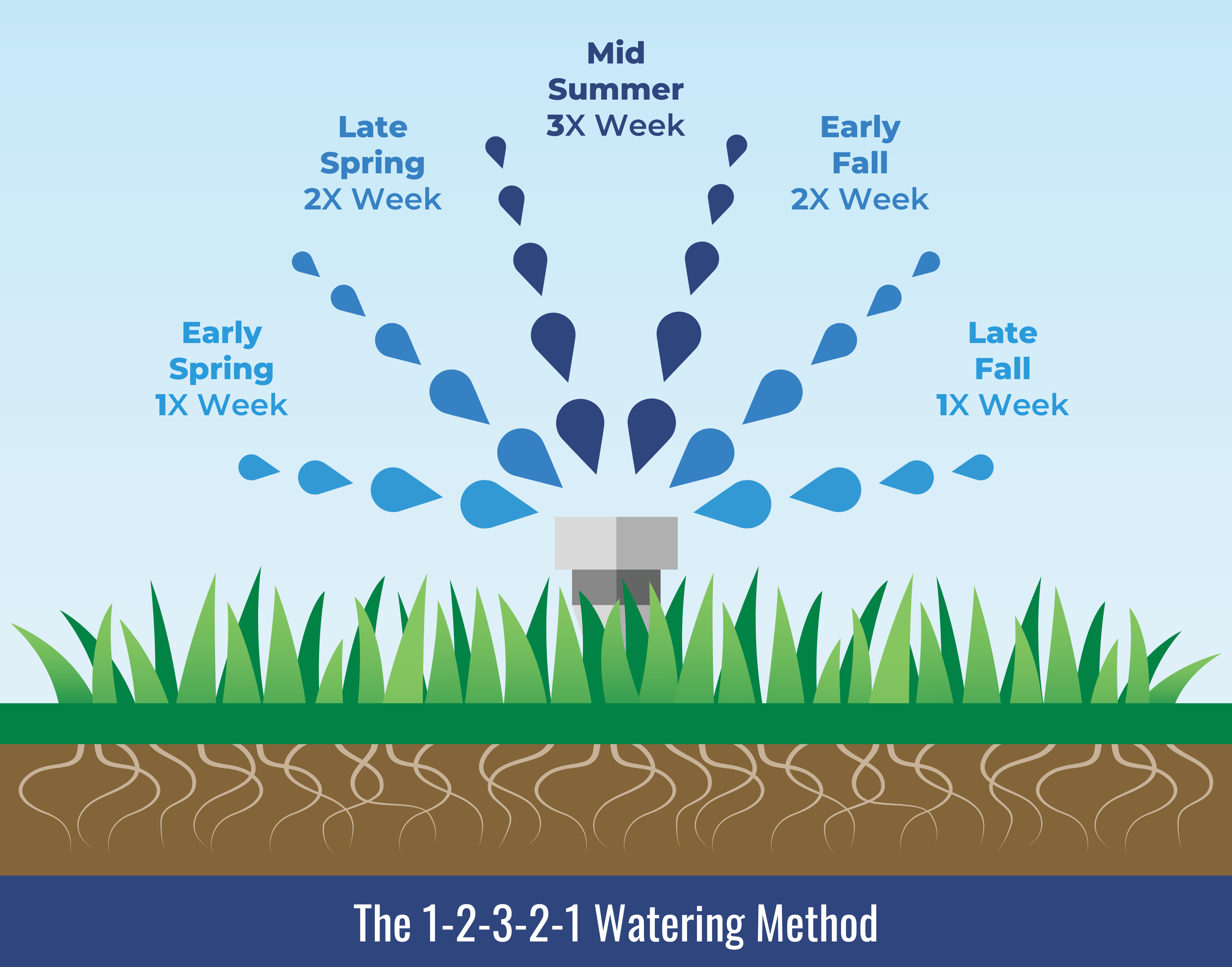Home » How Often Should I Water My Lawn in Idaho?

How much water lawns need here in the Treasure Valley depends greatly on the weather, amount of sun exposure, soil type, and the number of mature trees and shrubs competing for water and nutrients. Adjust your lawn watering schedule based on these factors to maintain a healthy lawn.
In the cooler spring and fall seasons, lawns require less water due to the mild temperatures and higher humidity in the air. Watering less frequently during these seasons can help prevent excessive moisture in the soil, which can lead to fungal growth and lawn disease.
During the hot and dry summer season, lawns need more water to stay healthy and avoid drying out. Watering deeply a few times a week instead of every day can help the grass develop deep, healthy roots, making it more resistant to drought and temperature fluctuations.

We recommend using the 1-2-3-2-1 deep watering method to ensure your lawn gets the right amount of moisture throughout the year.
Over-watering and shallow watering can lead to shallow root systems, which make your lawn more vulnerable to drought and other environmental issues. Furthermore, improper watering habits can create an environment that encourages the growth of weeds and pests that thrive in damp conditions.
To prevent shallow root growth, it’s important to make sure water penetrates deep into the soil when you water your lawn. Using deep watering techniques and allowing your lawn to dry out between watering sessions encourages your lawn’s roots to grow deeper into the soil. This not only helps your lawn withstand drought but also reduces overall water usage.
We recommend maintaining a soil moisture depth of 6-8 inches through deep watering. Adjusting your lawn watering schedule according to the season and watering deeply can help keep your lawn green and healthy throughout the year.
If your property has compacted or clay soil or a sloped yard, use the cycle and soak watering method. This method can improve how well the soil absorbs water and prevent water and soil runoff.
First, determine how much water your lawn needs based on the type of grass and soil you have. Then, divide the total watering time into smaller cycles.
For example: If you need to water for 30 minutes, you can do three cycles of 10 minutes each, with breaks of around 30 minutes in between.
This allows the soil to absorb the water slowly, encouraging deep root growth and reducing the need for frequent watering.
Before starting the next cycle, check soil moisture and assess current weather conditions. Adjust your schedule as needed to ensure your lawn gets the right amount of water.
Understanding your lawn’s unique water requirements and adjusting your watering practices accordingly is a key factor for maintaining a green, healthy lawn throughout the year. By following the seasonal adjustments and deep watering techniques, you can encourage deep, strong roots and conserve water.
If you want to improve your lawn’s health, we provide professional lawn care services such as fertilizing, weed control, pest control, aeration, and overseeding. Our experienced technicians can also diagnose and treat any problems your lawn might have. Call us today at 208-585-9400 to learn about our lawn care programs and how to improve your lawn’s health.
Learn more about optimal watering practices and why deep lawn roots matter.
Read Colorado State University’s informative PDF for more tips on watering established lawns.
To learn more about the cycle and soak watering method, read the EPA (United States Environmental Protection Agency) brochure.
